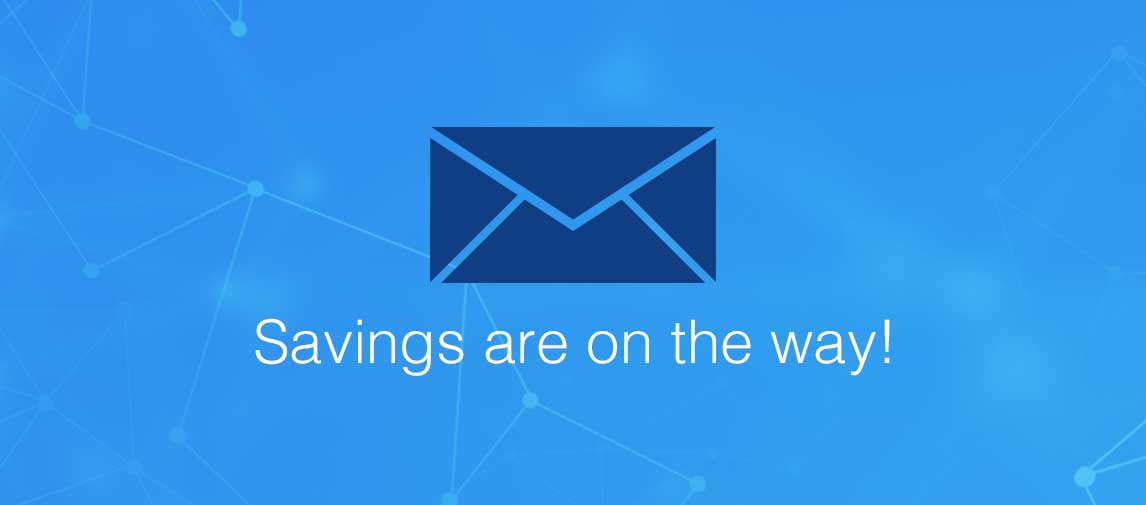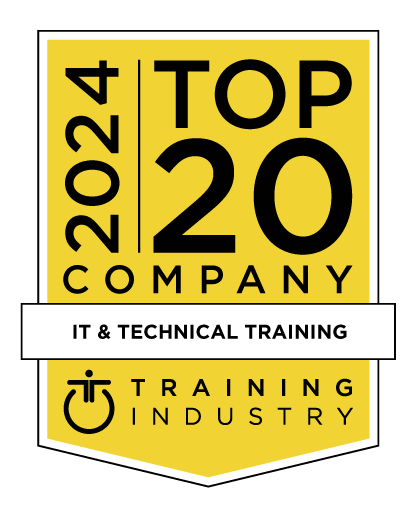title
Please take a moment to fill out this form. We will get back to you as soon as possible.
All fields marked with an asterisk (*) are mandatory.
Developing Solutions for Microsoft Azure
Course Description
Overview
This course teaches developers how to create end-to-end solutions in Microsoft Azure. Students will learn how to implement Azure compute solutions, create Azure Functions, implement and manage web apps, develop solutions utilizing Azure storage, implement authentication and authorization, and secure their solutions by using KeyVault and Managed Identities. Students will also learn how to connect to and consume Azure services and third-party services, and include event- and message-based models in their solutions. The course also covers monitoring, troubleshooting, and optimizing Azure solutions.Objectives
Audience
Prerequisites
- Hands-on experience with Azure IaaS and PaaS solutions, and the Azure Portal.
- Experience writing in an Azure supported language at the intermediate level. (C#, JavaScript, Python, or Java)
- Ability to write code to connect and perform operations on, a SQL or NoSQL database product. (SQL Server, Oracle, MongoDB, Cassandra or similar)
- Experience writing code to handle authentication, authorization, and other security principles at the intermediate level.
- A general understanding of HTML, the HTTP protocol and REST API interfaces.
- Free online: Azure Fundamentals (https://docs.microsoft.com/en-us/learn/paths/azure-fundamentals/)
- Instructor-led course: AZ-900: Azure Fundamentals
Topics
- Introduction
- Examine Azure App Service
- Examine Azure App Service plans
- Deploy to App Service
- Explore authentication and authorization in App Service
- Discover App Service networking features
- Exercise: Create a static HTML web app by using Azure Cloud Shell
- Knowledge check
- Introduction
- Configure application settings
- Configure general settings
- Configure path mappings
- Enable diagnostic logging
- Configure security certificates
- Knowledge check
- Introduction
- Examine autoscale factors
- Identify autoscale factors
- Enable autoscale in App Service
- Explore autoscale best practices
- Knowledge check
- Introduction
- Explore staging environments
- Examine slot swapping
- Swap deployment slots
- Route traffic in App Service
- Knowledge check
- Introduction
- Discover Azure Functions
- Compare Azure Functions hosting options
- Scale Azure Functions
- Knowledge check
- Introduction
- Explore Azure Functions development
- Create triggers and bindings
- Connect functions to Azure services
- Exercise: Create an Azure Function by using Visual Studio Code
- Knowledge check
- Introduction
- Explore Azure Blob storage
- Discover Azure Blob storage resource types
- Explore Azure Storage security features
- Discover static website hosting in Azure Storage
- Knowledge check
- Introduction
- Explore the Azure Blob storage lifecycle
- Discover Blob storage lifecycle policies
- Implement Blob storage lifecycle policies
- Rehydrate blob data from the archive tier
- Knowledge check
- Introduction
- Explore Azure Blob storage client library
- Create a client object
- Exercise: Create Blob storage resources by using the .NET client library
- Manage container properties and metadata by using .NET
- Set and retrieve properties and metadata for blob resources by using REST
- Knowledge check
- Introduction
- Identify key benefits of Azure Cosmos DB
- Explore the resource hierarchy
- Explore consistency levels
- Choose the right consistency level
- Explore supported APIs
- Discover request units
- Exercise: Create Azure Cosmos DB resources by using the Azure portal
- Knowledge check
- Introduction
- Explore Microsoft .NET SDK v3 for Azure Cosmos DB
- Exercise: Create resources by using the Microsoft .NET SDK v3
- Create stored procedures
- Create triggers and user-defined functions
- Explore change feed in Azure Cosmos DB
- Knowledge check
- Introduction
- Discover the Azure Container Registry
- Explore storage capabilities
- Build and manage containers with tasks
- Explore elements of a Dockerfile
- Exercise: Build and run a container image by using Azure Container Registry Tasks
- Knowledge check
- Introduction
- Explore Azure Container Instances
- Exercise - Deploy a container instance by using the Azure CLI
- Run containerized tasks with restart policies
- Set environment variables in container instances
- Mount an Azure file share in Azure Container Instances
- Knowledge check
- Introduction
- Explore Azure Container Apps
- Exercise - Deploy a container app
- Explore containers in Azure Container Apps
- Implement authentication and authorization in Azure Container Apps
- Manage revisions and secrets in Azure Container Apps
- Explore Dapr integration with Azure Container Apps
- Knowledge check
- Introduction
- Explore the Microsoft identity platform
- Explore service principals
- Discover permissions and consent
- Discover conditional access
- Knowledge check
- Introduction
- Explore the Microsoft Authentication Library
- Initialize client applications
- Exercise - Implement interactive authentication by using MSAL.NET
- Knowledge check
- Introduction
- Discover shared access signatures
- Choose when to use shared access signatures
- Explore stored access policies
- Knowledge check
- Introduction
- Discover Microsoft Graph
- Query Microsoft Graph by using REST
- Query Microsoft Graph by using SDKs
- Apply best practices to Microsoft Graph
- Knowledge check
- Introduction
- Explore Azure Key Vault
- Discover Azure Key Vault best practices
- Authenticate to Azure Key Vault
- Exercise: Set and retrieve a secret from Azure Key Vault by using Azure CLI
- Knowledge check
- Introduction
- Explore managed identities
- Discover the managed identities authentication flow
- Configure managed identities
- Acquire an access token
- Knowledge check
- Introduction
- Explore the Azure App Configuration service
- Create paired keys and values
- Manage application features
- Secure app configuration data
- Knowledge check
- Introduction
- Discover the API Management service
- Explore API gateways
- Explore API Management policies
- Create advanced policies
- Secure APIs by using subscriptions
- Secure APIs by using certificates
- Exercise - Create a backend API
- Knowledge check
- Introduction
- Explore Azure Event Grid
- Discover event schemas
- Explore event delivery durability
- Control access to events
- Receive events by using webhooks
- Filter events
- Exercise - Route custom events to web endpoint by using Azure CLI
- Knowledge check
- Introduction
- Discover Azure Event Hubs
- Explore Event Hubs Capture
- Scale your processing application
- Control access to events
- Perform common operations with the Event Hubs client library
- Knowledge check
- Introduction
- Choose a message queue solution
- Explore Azure Service Bus
- Discover Service Bus queues, topics, and subscriptions
- Explore Service Bus message payloads and serialization
- Exercise: Send and receive message from a Service Bus queue by using .NET.
- Explore Azure Queue Storage
- Create and manage Azure Queue Storage and messages by using .NET
- Knowledge check
- Introduction
- Explore Application Insights
- Discover log-based metrics
- Instrument an app for monitoring
- Select an availability test
- Troubleshoot app performance by using Application Map
- Knowledge check
Related Courses
-
Microsoft Azure Security Technologies
MOC-AZ-500T00- Duration: 4 Days
- Delivery Format: Classroom Training, Online Training
- Price: 2,380.00 USD
-
Introduction to Microsoft Azure
MOC-AZ-900T00- Duration: 1 Day
- Delivery Format: Classroom Training, Online Training
- Price: 595.00 USD
Self-Paced Training Info
Learn at your own pace with anytime, anywhere training
- Same in-demand topics as instructor-led public and private classes.
- Standalone learning or supplemental reinforcement.
- e-Learning content varies by course and technology.
- View the Self-Paced version of this outline and what is included in the SPVC course.
- Learn more about e-Learning
Course Added To Shopping Cart
bla
bla
bla
bla
bla
bla
Self-Paced Training Terms & Conditions
Exam Terms & Conditions
ONCE YOU PURCHASE THIS EXAM YOU WILL NOT BE ABLE TO CANCEL YOUR ORDER. You are billed for the course after hitting submit. Exams are non-refundable.
Vouchers expire 12 months from the date they are issued, unless otherwise specified in the terms and conditions. Voucher expiration dates cannot be extended. All sales are final.Please refer to the full terms and conditions here.
Sorry, there are no classes that meet your criteria.
Please contact us to schedule a class.

STOP! Before You Leave
Save 0% on this course!
Take advantage of our online-only offer & save 0% on any course !
Promo Code skip0 will be applied to your registration
Purchase Information
title
Please take a moment to fill out this form. We will get back to you as soon as possible.
All fields marked with an asterisk (*) are mandatory.










